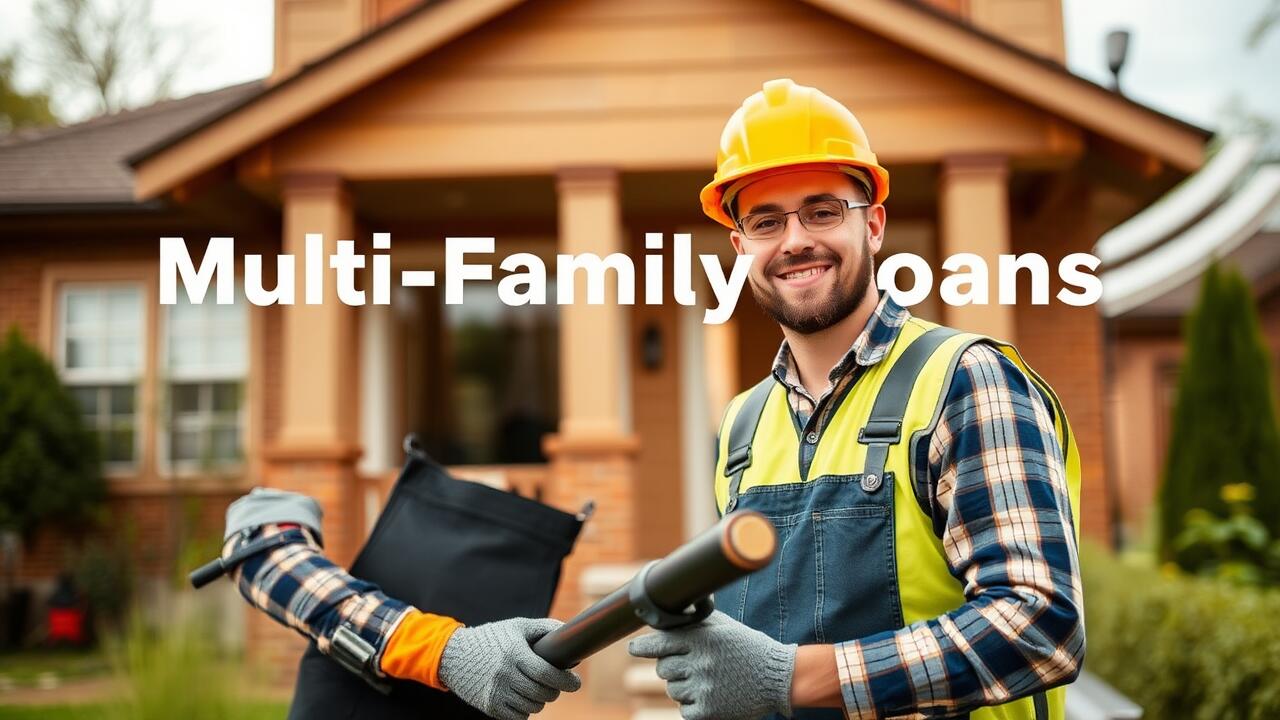
Table Of Contents
Financial Considerations
When considering a multifamily FHA loan, it is essential to analyze the financial aspects thoroughly. Multi-Family Loans often require a lower down payment compared to conventional financing, making them an attractive option for investors and first-time homebuyers. Borrowers can finance properties with two to four units, allowing them to generate rental income while managing their personal residence. This can lead to a more favorable cash flow situation, especially in markets where rental demand is high.
Interest rates for multifamily FHA loans are typically competitive, which can increase affordability over the long term. Lenders may be more lenient with credit requirements, providing opportunities for individuals who might struggle to secure traditional financing. Understanding the cost implications of property management, maintenance, and potential vacancies is also crucial. Keeping these factors in mind helps prospective borrowers make informed decisions about investing in Multi-Family Loans.
Interest Rates and Terms
Interest rates for multi-family FHA loans tend to be more favorable compared to many conventional financing options. The Federal Housing Administration backs these loans, which can result in lower interest rates that appeal to a wide range of investors. Terms for these loans frequently extend to 30 years, allowing for manageable monthly payments that enhance cash flow potential.
The structure of multi-family loans also varies, often offering adjustable-rate options alongside fixed-rate ones. The choice between these can influence long-term financial planning and investment returns. Borrowers typically benefit from lower down payment requirements, further enhancing the appeal of multi-family FHA loans in an ever-competitive rental market.
Common Misconceptions
Many individuals mistakenly believe that FHA loans are only available for single-family homes. This misconception can deter potential investors from considering Multi-Family Loans as viable options. In reality, FHA loans are specifically designed to assist buyers in acquiring multi-unit properties, often accommodating up to four units. This opens the door for investment opportunities that can generate rental income.
Another common myth revolves around the belief that FHA loans require a perfect credit score. While having a good credit history is beneficial, FHA loans are accessible to those with lower credit scores compared to conventional financing. This flexibility allows more people to qualify for Multi-Family Loans, promoting a wider range of real estate investment possibilities. Understanding these nuances can encourage potential buyers to explore options they may have previously overlooked.
Clarifying Myths About FHA Loans
Many people hold misconceptions about FHA loans that can lead to confusion when considering Multi-Family Loans. One common myth is that FHA loans are exclusively for first-time homebuyers. While they do have programs designed to assist those purchasing their first home, these loans are also available to repeat buyers and investors looking to finance multi-family properties. The flexibility of FHA loans makes them an attractive option for various borrowers, including seasoned investors.
Another misconception is that FHA loans require a perfect credit score. In reality, FHA loans are designed to be more accessible and can often accommodate lower credit scores than conventional loans. This opens the door for more individuals and investors to consider Multi-Family Loans, thus expanding opportunities to both live in and generate income from multi-family properties. By debunking these myths, potential borrowers can make more informed decisions regarding their financing options.
Comparison with Conventional Loans
Multi-family loans present distinct advantages when compared to conventional loans. One of the primary differences is in the down payment requirements. While conventional loans often necessitate a larger down payment, FHA loans can allow for as little as 3.5%. This accessibility attracts many first-time homebuyers and investors looking to acquire larger properties. Another aspect is the flexibility in credit score requirements. FHA loans typically cater to a wider range of credit profiles, enabling more individuals to qualify for funding.
In addition to the financial terms, the funding process for multi-family loans differs significantly. FHA loans often involve stricter guidelines regarding property condition and appraisal standards. These regulations are designed to protect the investment and ensure that properties meet certain safety standards. Conventional loans, while they may have fewer property requirements, can come with more stringent income verification processes. The overall result is a lending landscape that offers both pathways, with each having unique attributes catering to different types of borrowers.
Key Differences and Similarities
Multi-Family Loans differ significantly from conventional loans in terms of eligibility and underwriting standards. While conventional loans often require a higher credit score and a larger down payment, FHA loans aim to encourage homeownership among a broader range of buyers. This makes Multi-Family Loans particularly appealing to those who might struggle to secure financing through traditional means, as the FHA allows for lower credit scores and smaller down payments.
Another notable difference lies in the property types eligible for financing. Conventional loans may have stricter criteria for multi-unit properties, whereas FHA loans can cover up to four units. This offers real estate investors and homebuyers the flexibility to reside in one unit while renting out the others. Despite these differences, both loan types share a common goal of facilitating homeownership, although Multi-Family Loans specifically cater to the unique needs of those interested in multi-unit properties.
FAQS
What is a multifamily FHA loan?
A multifamily FHA loan is a government-backed mortgage designed for individuals looking to purchase or refinance multi-unit properties, typically with two to four dwelling units. It allows borrowers to secure favorable financing terms while also enabling them to live in one of the units and rent out the others.
Who is eligible for a multifamily FHA loan?
Eligibility for a multifamily FHA loan generally includes borrowers with a credit score of at least 580, although some lenders may allow scores as low as 500 with a larger down payment. Additionally, the property must be owner-occupied, and the borrower must meet certain income and debt-to-income ratio requirements.
How does the down payment requirement for a multifamily FHA loan compare to a conventional loan?
Typically, a multifamily FHA loan requires a minimum down payment of 3.5%, which is lower than many conventional loans that often require at least 5% to 20%. This makes FHA loans more accessible for first-time homebuyers and investors.
Can I use rental income to qualify for a multifamily FHA loan?
Yes, you can use projected rental income from the other units in the property to help qualify for the multifamily FHA loan. Lenders usually consider approximately 75% of the rental income when calculating your debt-to-income ratio.
Are there any specific property requirements for a multifamily FHA loan?
Yes, the property must meet certain standards set by the Federal Housing Administration (FHA). It should be in good condition and meet health and safety codes. Additionally, the borrower must occupy one of the units as their primary residence.




